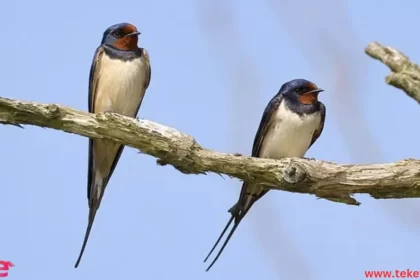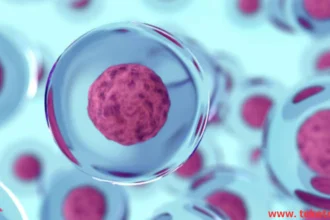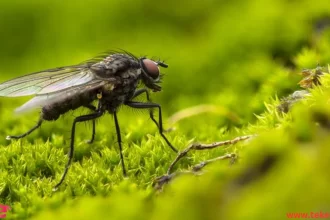You might think of bees as tiny insects that collect nectar and perform a simple dance inside the hive. But did you know that bees can recognize faces like humans? Yes, this small creature possesses an incredible cognitive ability that allows it to recognize your face—and even distinguish between multiple faces—with a level of accuracy that baffles scientists. This isn’t science fiction; it’s a fact proven by research. At a time when artificial intelligence is striving to mimic the human mind, bees surprise us with their extraordinary perceptual capabilities.
In this article from teketrek, we’ll take you on a fascinating journey inside the bee’s brain. We’ll explore how and why this tiny creature can recognize faces, uncover a groundbreaking scientific study, and even amaze you further with this extra fact: bees can count! So keep reading to discover the hidden intelligence of nature.
Did You Know That Bees Can Recognize Faces Like Humans? What Does That Really Mean?
Did you know that bees can recognize faces like humans? Face recognition is the ability to identify other beings and associate their faces with specific identities. For humans, this skill is a basic part of social life—we simply recognize our friends and relatives by their faces and can distinguish thousands of people with just a glance. But can a tiny creature like the bee do the same?
When talking about face recognition in the insect world, it might seem impossible at first. Insect brains are extremely small and lack the massive number of neurons found in the human brain. However, bees possess a highly efficient visual system that analyzes patterns and detects variations in shape, light, and color. This enables them to distinguish between similar-looking objects such as different flowers—or human faces.
The key difference between humans and bees in this context is that humans have a specialized brain region called the fusiform face area, responsible for processing and storing facial features. Bees don’t have this brain structure, yet they use smart pattern-processing strategies to analyze the overall layout of a face—like the spatial arrangement of the eyes, nose, and mouth. In other words, bees don’t see faces the way we do, but rather read them as visual patterns. This makes the bee’s approach to facial recognition distinctly different from that of humans.

The Scientific Study Behind the Discovery
In 2005, the University of Queensland in Australia conducted a fascinating study to test: Can bees really recognize faces like humans? Researchers placed images of human faces inside a test box and trained bees to choose a specific face in exchange for a sugary reward.
Over time, the bees began to recognize the correct face with an accuracy of up to 75%, which is remarkable compared to the human average of 85–90%. Even more astonishingly, the bees didn’t just recognize one face—they could distinguish between different sets of faces. This means they relied on complete visual pattern processing, not just individual colors or shapes.
The Best Dog Breeds for Home Living: Your Guide to Choosing the Perfect Family Companion
Did You Know That Bees Can Recognize Faces Like Humans? Why Is This Discovery Revolutionary?
Did you know that bees can recognize faces like humans? This isn’t just a curious discovery—it’s a true scientific breakthrough. Here’s why:
First: It proves that complex visual cognition doesn’t require a large brain. Bees have fewer than a million neurons, yet they perform tasks we consider highly “complex.”
Second: It helps researchers study the principles of intelligence using simple models, paving the way for artificial intelligence systems that mimic bee-like processing methods.
Third: It reveals nature’s ability to develop smart solutions under strict biological constraints—supporting the scientific trend of “bio-design” and drawing technological inspiration from living organisms.
The Difference Between Whales and Dolphins: 5 Key Differences and Their Roles in Ecological Balance
Did You Know That Bees Can Recognize Faces Like Humans—And Even Count?!
If you think the bee’s face recognition ability is amazing, get ready for the next surprise: did you know that bees can recognize faces like humans—and also count up to 4 or 5?
In impressive experiments, scientists trained bees to distinguish cards with different numerical symbols. The bees not only recognized quantities, but also showed the ability to perform simple addition and subtraction!
This kind of understanding is known as “approximate numerical cognition,” which is also found in some birds and mammals. In other words, bees don’t just act on instinct—they use a type of visual analytical thinking. This broadens our understanding of animal intelligence significantly.

Conclusion
Did you know that bees can recognize faces like humans? This discovery compels us to completely rethink our definitions of intelligence. The creature we thought was just a working insect turns out to have extraordinary mental abilities—it can learn, analyze, recognize, and even perform basic math!
What makes this discovery even more wonderful is that it opens the door to a broader understanding of how perception works—not only in animals, but possibly in humans too. Are we really the only species capable of understanding and recognition? Could there be birds or reptiles that can read our faces and emotions? The answer might completely change how we view life around us.
And you, dear reader—have you ever felt that an animal could sense your emotional state? Share your story in the comments—your experience might just be the next chapter in this astonishing scientific discovery!





